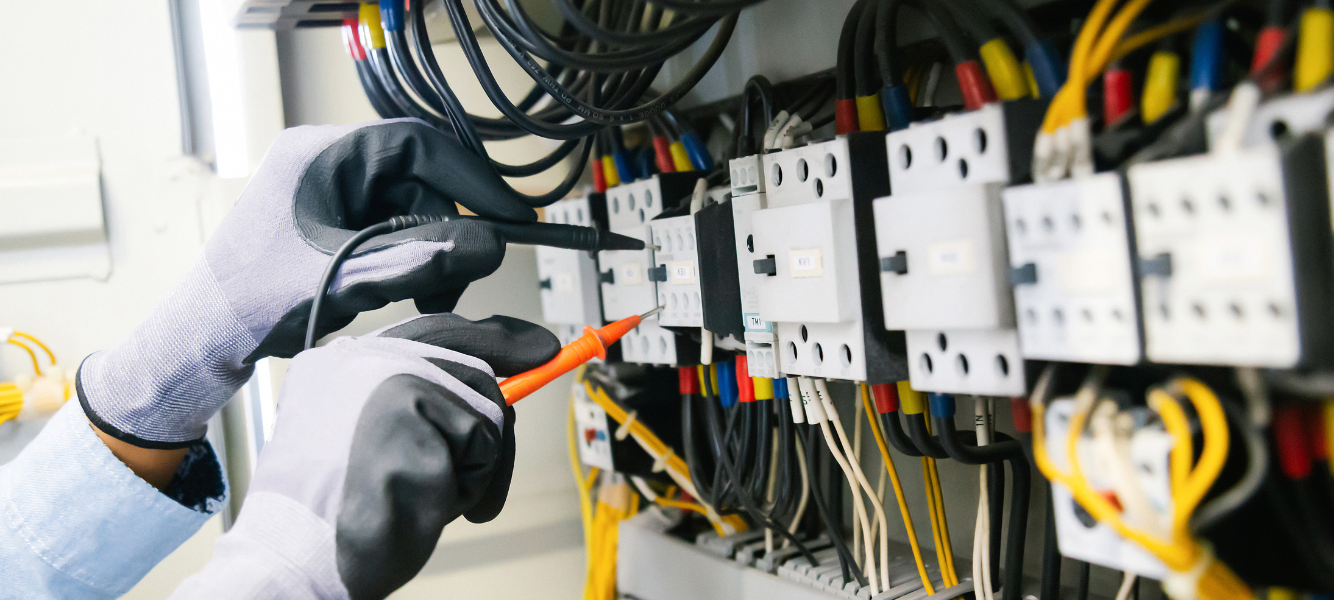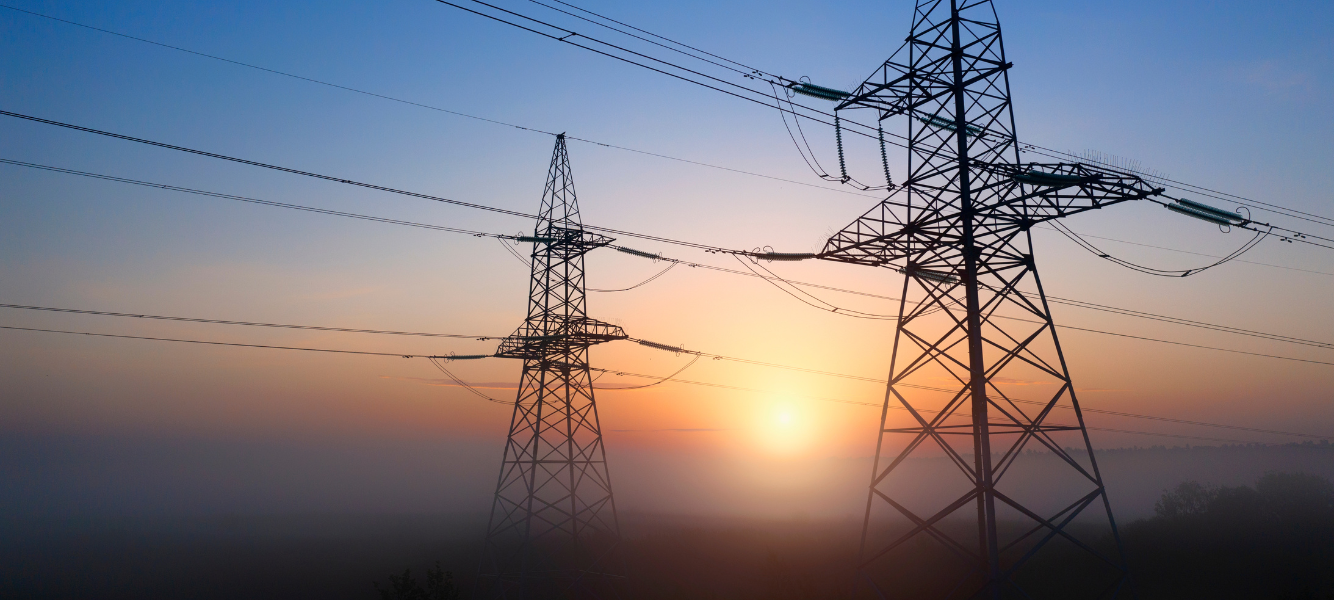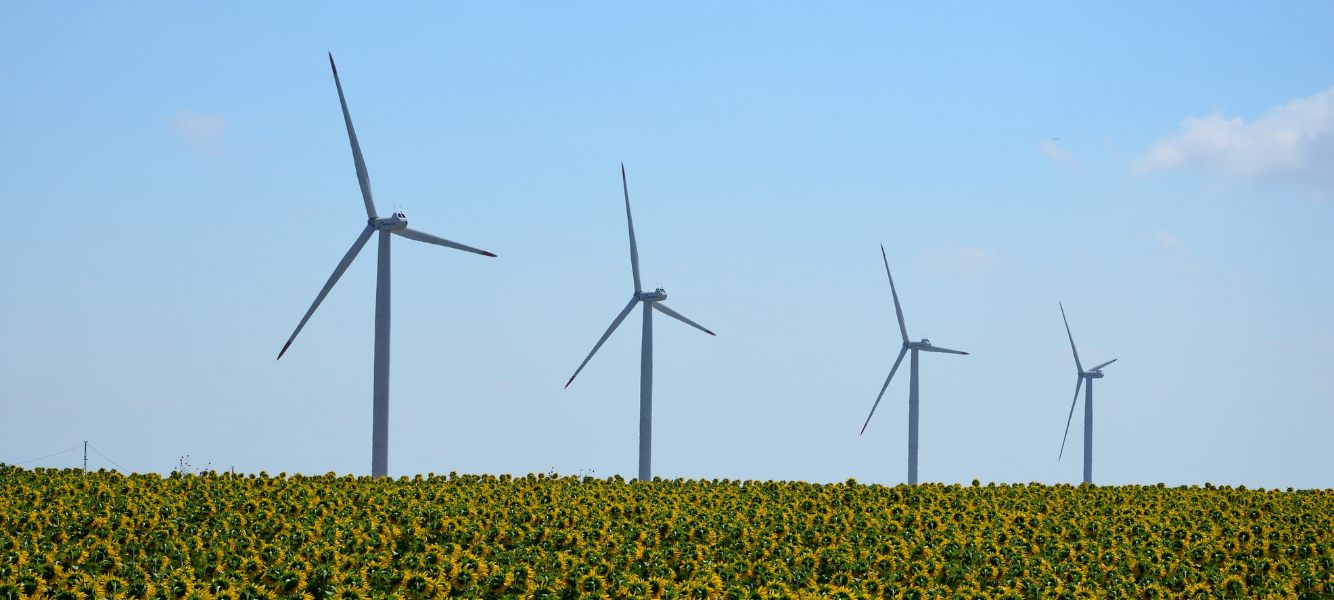The US renewable energy sector is booming in 2025, with clean energy jobs accounting for more than 50% of all new energy hires in 2023 and growing twice as fast as the overall job market.
Massive investments like the Inflation Reduction Act are spurring a surge in solar, wind, battery storage, grid upgrades and EV infrastructure.
This growth comes with a skills gap – in one industry survey, energy storage, SCADA & data analytics, and environmental compliance were rated among the most in-demand skill sets for the next three years.
Busy hiring managers seek candidates who can hit the ground running, while professionals are eager to future-proof their careers.
In this forward-looking guide, we outline the top 10 skills employers want in US renewable energy in 2025.
Each skill section explains what the skill is and why it matters now (with current US data or policy context), plus examples of roles requiring it, proof signals employers look for on resumes, and tips on how to develop the skill within 6–12 months.
Whether you’re planning 2025 hires or polishing your resume for a renewable energy job in the US, these are the top skills employers want for the renewable energy transition.
Skill 1: Grid interconnection and transmission planning know-how
Why it matters in 2025
Navigating grid interconnection is crucial as renewable projects flood the transmission system.
The interconnection queues for new power plants have swelled to nearly 2,600 GW of generation and storage capacity waiting to connect.
Delays are the norm – projects built in recent years took a median 5 years from interconnection request to operation.
With the U.S. investing $73 billion to modernise the electric grid and build new transmission lines, employers highly value talent who understand grid capacity, constraints and NERC (North American Electric Reliability Corporation) standards.
These specialists help renewable projects get through lengthy queues and reliably plugged into an aging, capacity-strained network.
Renewable energy roles that use grid interconnection and transmission planning skills
-
Interconnection Manager / Queue Analyst
-
Transmission Planning Engineer
-
Power Systems Modelling Specialist (Grid Integration)
-
Renewable Project Developer (Grid interconnection focus)
Proof signals to look for
-
Familiarity with NERC reliability standards and FERC interconnection procedures
-
Experience conducting or managing power flow studies (e.g. using PSSE, PowerWorld, PSCAD software)
-
Track record of shepherding projects through RTO/ISO queue processes (PJM, CAISO, etc.)
-
Professional Engineer (PE) licence in electrical or power systems engineering
How to develop your skills in grid interconnection and transmission planning
Gain hands-on exposure to grid impact studies and regulatory rules.
For example, take a course on facility interconnection requirements or pursue a NERC System Operator Certification via NERC’s training program.
Build familiarity with transmission planning tools (many offer student versions) and read up on interconnection case studies from DOE’s Grid Deployment Office.
Volunteering on a local utility transmission planning committee or attending FERC webinars can quickly build practical know-how and demonstrate your initiative.
Skill 2: Project management and delivery (utility-scale & distributed)
Why it matters in 2025
With record amounts of solar, wind, and battery projects underway, the ability to deliver projects on time and on budget is mission-critical.
Renewable energy construction jobs grew 4.5% in 2023, nearly double the rate of overall construction growth (2.3%), highlighting the rapid expansion of projects.
Employers need project managers who can juggle scheduling, contracts, permits and risks across utility-scale farms and distributed installations.
In a 2025 industry staffing survey, “Project Manager” ranked among the top five most in-demand roles in the energy sector.
Effective project leaders ensure that new renewable assets (from solar farms to EV charging networks) are completed safely, efficiently and compliant with all requirements – which directly impacts company revenues and reputation.
Roles that use project management and delivery skills
-
Renewable Energy Project Manager (solar, wind, storage)
-
Construction Manager / Site Manager (EPC for renewables)
-
Project Engineer (renewable installations)
-
Programme Manager (clean energy portfolio delivery)
Proof signals to look for
-
PMP certification (Project Management Professional) or similar project management credentials
-
Track record of on-time delivery for renewable projects (e.g. megawatts commissioned, projects delivered in past year)
-
Experience with project planning software (Primavera P6, MS Project) and contract management (EPC contracts, PPAs)
-
Familiarity with risk management and permitting – e.g. handled environmental assessments, interconnection agreements, or community engagement on past projects
How to develop your project management skills for the renewable energy sector
Strengthen your project management foundations and get renewable-specific experience.
Consider obtaining a PMP certification through the Project Management Institute (PMI) to formalise your skills in scope, scheduling and stakeholder management.
You can also enroll in a renewable energy project management course (for example, the Renewable Energy Institute offers an accredited program on managing renewable projects).
To build domain experience, volunteer for stretch assignments on ongoing solar/wind projects or shadow a senior project manager.
Master industry contracts and lingo – for instance, review actual PPA agreements or EPC contract templates.
Finally, sharpen software skills (try a free trial of Primavera or a construction management app) and document tangible outcomes (budget saved, timeline improved) from any project work you lead.
Skill 3: Energy storage integration and safety expertise
Why it matters in 2025
As battery energy storage systems (BESS) are deployed at record pace, employers seek engineers and technicians who understand how to integrate storage safely and effectively.
The U.S. energy storage market saw record installations exceeding 12 GW in 2024, a 33% year-over-year growth.
Batteries are now routinely paired with solar and wind projects to smooth output and provide grid services.
High-profile safety incidents, however, have made specialised BESS safety knowledge essential – from fire suppression and thermal management to complying with codes like NFPA 855 (the fire safety standard for storage).
In short, companies value talent who can design and operate storage systems that perform reliably while meeting all regulatory standards, especially as federal and state incentives push storage into community and grid applications.
Roles that use energy storage integration skills and safety expertise
-
Battery Storage Integration Engineer (renewable + storage projects)
-
Power Electronics Engineer (inverters, battery PCS design)
-
Energy Management System (EMS/BMS) Specialist
-
Commissioning Technician (BESS installations)
Proof signals to look for
-
Knowledge of power electronics and grid interconnection standards for storage (e.g. IEEE 1547 for inverters)
-
Familiarity with BESS safety codes and standards (NFPA 855, UL 9540/9540A testing)
-
Hands-on experience with battery management systems (BMS) or energy management software
-
Demonstrated ability to optimise storage dispatch or improve battery performance (e.g. reduced degradation, efficient charge/discharge scheduling)
How to develop your storage integration skills and safety expertise
Start by deepening your theoretical and practical understanding of battery systems.
Online programs like the U.S. Department of Energy’s Energy Storage Technology Advancement Partnership offer webinars and resources on BESS design and safety.
You might also take a specialised course in battery engineering or power electronics for renewables through a university extension or Coursera.
To get practical experience, seek out battery installation projects in your area – for example, help a community solar project add storage or intern with a storage provider.
Gaining a certification can boost credibility: the Association of Energy Engineers (AEE) offers a Certified Energy Storage Professional (CESP) program.
Also consider OSHA or NFPA’s training modules on electrical safety specific to batteries.
By combining code knowledge with hands-on practice (even if it’s assembling a small battery backup system), you can quickly build a portfolio that proves your BESS know-how to employers.
Skill 4: SCADA, OT, and industrial controls (including OT cybersecurity)
Why it matters in 2025
Modern renewable plants and grids are digitally driven, with sensors and controls everywhere – which means SCADA (Supervisory Control and Data Acquisition) and OT (operational technology) skills are in high demand.
Employers need professionals who can configure SCADA systems, troubleshoot PLCs/RTUs, and secure these networks against cyber threats.
Grid modernisation is introducing new vulnerabilities; research by Sandia National Labs underscores the importance of safeguarding distributed energy resources from cyber attacks.
Notably, the U.S. Treasury even offers tax credits for advanced SCADA equipment in certain energy communities, reinforcing how critical this skill set has become.
In a recent industry poll, 26% of respondents chose “SCADA & data analytics” as the most in-demand skill set for renewables through 2028.
Mastering SCADA and OT means being able to keep wind, solar, and storage assets talking to the grid securely and efficiently – a fundamental need as fleets scale up and come under potential cyber threats.
Renewable energy roles that use SCADA, OT, and industrial controls
-
SCADA Engineer / Control Systems Engineer (wind or solar operations)
-
OT Cybersecurity Analyst (industrial control systems security)
-
Wind Farm or Solar Farm SCADA Technician
-
Remote Operations Centre Analyst (monitoring renewable assets)
Proof signals to look for
-
Proficiency with common SCADA platforms and protocols (e.g. OSISoft PI, DNP3, Modbus, SEL relays)
-
Experience implementing PLC logic or HMI configurations in an industrial setting
-
Knowledge of NERC CIP cybersecurity standards or ISA/IEC 62443 for industrial control system security
-
Examples of past work improving uptime via SCADA (e.g. developed alarm dashboards, integrated a new sensor network, or closed cybersecurity gaps)
How to develop your SCADA, OT, and industrial controls sills
Get hands-on with control systems and cybersecurity fundamentals.
You can set up a small SCADA simulation at home with an Arduino/PLC kit and free SCADA software (many vendors offer demo versions).
For formal learning, consider ISA’s Industrial Automation courses or a certified OT security training – for instance, the GIAC Global Industrial Cyber Security Professional (GICSP) certification.
Utility-focused programs like NERC’s GridSecCon offer workshops on securing grid control systems.
Try to contribute to SCADA projects: if you work at a plant, volunteer to optimise the SCADA alarms or update network firmware (under supervision).
Additionally, build cybersecurity awareness – even completing a course on network security or an ethical hacking basics class can show your commitment to protecting OT systems.
Demonstrating that you can both program industrial controllers and guard them against intrusions is a surefire way to impress renewable employers.
Skill 5: Data analysis and digital skills (Python, SQL, GIS, forecasting)
Why it matters in 2025
Data is the new fuel for renewables.
As solar and wind farms generate vast amounts of performance data, and as planning increasingly relies on GIS and analytics, companies prize candidates who are digitally savvy.
Data analysis skills help optimise energy output, predict maintenance, and inform site selection.
Data analysts and AI specialists improve renewable energy forecasting accuracy, aligning with the Department of Energy’s push for AI-driven grid resilience.
Likewise, geospatial analysis (GIS) is crucial for tasks like identifying optimal project sites or mapping transmission routes.
In practice, this skill set means being comfortable with coding (e.g. Python for automation), handling databases, and visualising insights. Even roles not explicitly “data scientist” benefit from digital proficiency – for example, a wind O&M engineer who can run a Python script to analyse turbine performance will stand out.
In a utilities workforce study, developing digital skills was highlighted as a key challenge as companies scale renewables.
Bottom line: employers want team members who can leverage data and software to drive smarter, faster decisions in renewable energy projects.
Roles that use data analysis and digital skills
-
Renewable Energy Data Analyst / Data Scientist
-
Performance Analyst (solar/wind farm performance monitoring)
-
GIS Specialist (site selection, environmental mapping)
-
Forecasting Analyst (energy production and demand forecasting)
Proof signals to look for
-
Programming ability in Python (pandas, NumPy for data analysis) or R, demonstrated through projects or GitHub examples
-
SQL database and data manipulation skills (e.g. consolidated years of operational data in a database, wrote complex queries)
-
Proficiency with data visualisation tools (Tableau, PowerBI) or GIS software (ArcGIS, QGIS) relevant to energy projects
-
Achievements such as improved forecast accuracy or identified cost savings via analysis (e.g. “reduced solar farm downtime 15% by analysing inverter data with Python script”)
How to develop your data analysis and digital skills
There are abundant resources to upskill in data analysis.
Start with free or low-cost courses on Python for data science – for instance, Coursera and edX have energy-focused data courses, or you can use DOE’s open datasets (like wind production data) for practice.
Build a small project: you might analyze NOAA weather data to predict solar output, or create a map of potential wind sites with QGIS.
For GIS, Esri offers online courses (often free) on ArcGIS basics. Also explore the NREL (National Renewable Energy Laboratory) datasets and tools; NREL provides APIs and even a Python toolkit (REopt) for renewable energy analysis.
Adding a relevant certification can help – e.g. a Google Data Analytics Certificate or an ESRI Technical Certification in GIS.
Finally, highlight any domain-specific digital work: if you’ve used SCADA data in an SQL database or coded a tool to streamline reporting, make sure to showcase it.
Even a small portfolio of energy-related data projects can convincingly demonstrate your digital skills to prospective employers.
Skill 6: Health, safety and environmental (HSE) compliance
Why it matters in 2025
Safety isn’t optional – it’s a core value, especially as the renewable workforce expands rapidly.
With thousands of new workers entering clean energy (wind turbine technician roles alone are projected to grow 60% by 2033), maintaining rigorous OSHA safety compliance and training is paramount.
Construction and operation of renewable facilities involve electrical work, working at heights (wind turbines), heavy equipment, and sometimes hazardous materials – all of which carry risks. OSHA requires that workers facing electrical hazards be properly trained and protected.
Similarly, standards like NFPA 70E (electrical safety) and GWO (Global Wind Organisation safety training for wind turbines) have become widely expected in resumes.
Employers in 2025 want HSE-minded staff who not only keep themselves safe but also contribute to a strong safety culture, minimising accidents and downtime.
Beyond personal safety, environmental compliance (protecting wildlife, following NEPA requirements) often falls under HSE roles, ensuring that renewable projects maintain community trust and meet regulatory obligations.
Roles that use HSE skills in the renewable sector
-
HSE Manager or EHS Coordinator (renewable energy company or construction contractor)
-
Site Safety Officer (wind farm or solar farm)
-
Wind Turbine Technician (with GWO training)
-
Environmental Compliance Specialist (permitting and monitoring)
Proof signals to look for
-
OSHA 30-hour certification for construction or general industry (shows extensive safety training)
-
NFPA 70E electrical safety training or certification (especially for those working with batteries or electrical systems)
-
GWO Basic Safety Training certificate for wind (modules in working at heights, fire awareness, first aid, etc.)
-
Demonstrated safety performance: e.g. led safety trainings, achieved X hours with zero lost-time incidents, implemented a lockout-tagout program
How to develop your HSE skills
If you haven’t already, complete the OSHA 30-hour training (the 30-hour course is intended for supervisors or workers with safety responsibilities). This provides a strong baseline in hazard recognition and OSHA standards.
Next, consider specialised courses: for electrical work, an NFPA 70E seminar (covering the 2024 updates) will deepen your understanding of arc flash prevention and PPE requirements.
For aspiring wind techs or site workers, invest in a GWO Basic Safety Training course – there are training centres in the US that offer the week-long program to get you certified in key modules. Additionally, stay current on relevant regulations (OSHA updates, EPA environmental rules for construction, local wildlife protection laws) by joining professional groups like the American Society of Safety Professionals (ASSP) or attending free webinars.
On the job, volunteer to become a safety champion or join the HSE committee.
Tangible actions like conducting a toolbox talk or updating a safety checklist not only build your skills but also give you concrete achievements to put on your resume.
Skill 7: Permitting and environmental regulatory knowledge
Why it matters in 2025
From bald eagle permits for wind farms to state-level wetlands approvals for transmission lines, permitting has become a make-or-break hurdle for renewable energy projects.
The process of securing environmental clearance (NEPA reviews, state siting approvals, community consultations) can significantly delay projects.
On average in the US, an energy project’s environmental review takes 4.5 years, and for interstate transmission lines it’s about 6.5 years – often stretching beyond a decade.
These delays hold back gigawatts of clean energy, which is why there is intense focus on permitting reform at federal and state levels.
Employers are eager to hire individuals who know how to navigate this maze efficiently in 2025’s context – understanding NEPA (National Environmental Policy Act) requirements, state permitting processes, and how to engage communities and stakeholders to avoid legal challenges.
Familiarity with new streamlining measures (for example, recent updates to NEPA regulations or fast-track programs in certain states) is a plus.
In short, being adept in environmental compliance and permitting means you can help actually get projects built, unlocking investment and ensuring legal sustainability of operations.
Roles that use permitting and environmental regulatory knowledge
-
Environmental Permitting Specialist (renewable projects)
-
Project Developer – Siting and Permitting Focus
-
Transmission Permitting Manager
-
Environmental Consultant (renewables focus, handling EIS/EIR reports)
Proof signals to look for
-
Experience shepherding projects through NEPA or similar state environmental reviews (e.g. completed Environmental Impact Statements, managed public comment process)
-
Knowledge of specific permits: e.g. Section 404 wetlands permits (Army Corps), Incidental Take Permits (for protected species), local planning/zoning approvals
-
Community engagement experience – ran town hall meetings, negotiated community benefit agreements or addressed environmental justice considerations for projects
-
Familiarity with permitting tools or tracking systems (for example, used GIS for environmental constraint mapping, or managed a permit matrix covering federal/state/local levels)
How to develop your permitting and environmental regulatory knowledge skills
Building permitting expertise can start with education and then move into hands-on exposure.
Take advantage of courses on environmental law or NEPA – many universities offer online certificates in environmental planning, or you can find workshops by the Council on Environmental Quality (CEQ) on the latest NEPA guidance.
Reading real case studies helps too: for instance, review a completed Environmental Assessment (EA) or Environmental Impact Statement (EIS) for a solar or wind project (these documents are often public).
To gain practical experience, consider volunteering with a local environmental nonprofit or community solar initiative to participate in public hearings or permit applications.
You could also obtain a certification like the Certified Environmental Professional (CEP) or take modules from the National Association of Environmental Professionals (NAEP) to show formal training. Within 6–12 months, aim to shadow a permitting process – even if within your company, ask to assist the permitting team on one aspect (like a wildlife survey or a landowner meeting).
By learning the language of regulators and stakeholders, you become the candidate who can reassure employers that their project will clear the transmission permitting and environmental hurdles on the way to operation.
Skill 8: Renewable project finance and commercial acumen
Why it matters in 2025
Behind every wind farm or battery installation is a complex web of financing and commercial agreements.
With huge capital flowing into clean energy (over $500 billion in new US clean energy investments announced from late 2022 to mid 2024 thanks to incentives like the IRA), employers need people who understand the numbers and the deals.
This skill is about knowing how renewable projects make money and get funded – from power purchase agreements (PPAs) and emerging offtake models, to tax equity, government grants, and new IRA tax credits (e.g. the Production Tax Credit and Investment Tax Credit bonuses for things like domestic content).
Candidates with project finance acumen can model a project’s economics, navigate debt/equity financing, and optimise revenue via PPA structures, carbon credits, or energy market participation.
The ability to speak the language of investors and CFOs is increasingly valued even in technical teams, because so many decisions (like project design or timing) hinge on financial viability.
Essentially, renewable energy firms in 2025 want team members who grasp both engineering and economics – ensuring projects pencil out and capital is used efficiently in a rapidly scaling market.
Roles that use renewable project finance skills
-
Renewable Energy Financial Analyst / Project Finance Manager
-
Commercial Manager (offtake contracts and deal negotiation)
-
Business Development Manager (origination of projects and partnerships)
-
Asset Manager (managing operating assets’ finances and performance)
Proof signals to look for
-
Experience modelling project finances (IRR, NPV, cash flow) for solar/wind/storage projects – e.g. skilled in Excel financial models or specialised software like PVSyst / SAM for energy yields
-
Knowledge of tax credits and incentives: for instance, can discuss how the Investment Tax Credit or Production Tax Credit works, or cite using bonus credits (like the 10% domestic content bonus)home.treasury.gov in a project
-
Deal sheet of commercial agreements worked on: PPAs signed (with volume or term noted), NABCEP (North American Board of Certified Energy Practitioners) certification if in solar sales, or participation in a successful project financing round
-
Familiarity with regulatory and market frameworks (ISO market basics, FERC orders, merchant vs contracted revenue models) – showing you understand the market context that drives project revenue
How to develop your skills in renewable project finance
If you’re coming from a purely technical background, start building your financial literacy through targeted learning.
You might take an online course on renewable energy project finance – for example, Coursera and edX have courses on energy finance and even specialised topics like PPA contract structures.
The Renewable Energy Finance Forum (REFF) and similar conferences often post free webinars or materials where industry leaders discuss current trends (e.g. tax equity post-IRA).
Make a habit of reading finance-focused reports from sources like BloombergNEF or Lazard’s Levelized Cost of Energy (LCOE) reports. To gain practical exposure, try to rotate into a project development or finance team for a project’s early stage: offer to help input assumptions into a financial model or research incentive programs for a new proposal.
Additionally, consider credentials like the Certified Renewable Energy Professional (REP) by AEE or even an introductory Financial Modelling certification – they signal your commitment to the commercial side.
Finally, sharpen your soft skills in negotiation and stakeholder communication, as project finance is about closing deals and aligning many parties. Even participating in a simulated PPA negotiation (some training providers run these) can give you a confidence boost.
Showing that you understand both the kilowatts and the cash flow will make you extremely valuable in the renewables job market.
Skill 9: Supply chain, procurement and quality assurance (QA)
Why it matters in 2025
Recent years have taught the energy industry harsh lessons about supply chain bottlenecks – from solar panel import delays to transformer shortages.
As the sector localises and expands manufacturing, employers need professionals who can strategically source materials, manage vendor relationships, and ensure equipment quality.
The stakes are high: a single component shortage can halt a project. For example, lead times for critical grid transformers have ballooned from around 50 weeks in 2021 to 120 weeks in 2024 on average, meaning a two-year wait for equipment that used to take one year.
Meanwhile, new policies are reshaping procurement: the Inflation Reduction Act’s domestic content bonus offers extra tax credits for projects using U.S.-made steel, iron, and components, driving demand for local suppliers.
Companies in 2025 want supply chain managers and procurement specialists who can navigate tariffs, logistics, and quality control – ensuring that solar panels, wind turbine parts, batteries, and electrical gear arrive on time and meet standards.
With global supply chains still under strain and a push for resilient, ethical sourcing, this skill set is all about keeping the trains running in the renewable boom.
Roles that use supply chain, procurement and quality assurance skills
-
Supply Chain Manager (renewable energy equipment)
-
Procurement Specialist or Buyer (solar modules, wind components, BESS)
-
Quality Assurance/Quality Control (QA/QC) Engineer (manufacturing or project site)
-
Logistics and Operations Coordinator (for renewable construction projects)
Proof signals to look for
-
Direct experience in strategic sourcing for energy projects – e.g. negotiated supply contracts for solar panels or wind turbine parts, handled RFPs and evaluated suppliers
-
Knowledge of international trade and compliance (familiar with import duties, the Uyghur Forced Labour Prevention Act implications on solar supply, etc.)
-
Achievements in cost reduction or risk mitigation: for instance, implemented a second-source strategy that saved X% cost or avoided a delay, or improved inventory turnover
-
QA/QC credentials or experience: could be ISO 9001 knowledge, Six Sigma certification, or having set up quality inspection processes for incoming components (ensuring vendor products meet technical specs and safety standards)
How to develop your skills in supply chain, procurement and quality assurance
Improving in this area involves both education and practical challenges.
You can start by learning supply chain principles through certifications like APICS Certified Supply Chain Professional (CSCP) or the ISM Certified Professional in Supply Management (CPSM), adding an energy focus in how you apply the concepts.
Given the unique aspects of renewable energy supply chains, read industry reports (for example, NREL and Wood Mackenzie publish studies on solar/wind supply trends). To understand quality systems, you might take an online course on ISO 9001 quality management or Lean Six Sigma Green Belt – these teach frameworks that you can apply to ensure consistent quality.
On the job (or even in a volunteer capacity), get involved in procurement tasks: perhaps help a nonprofit solar installer source panels, or intern with a renewable developer’s procurement team to learn how they evaluate suppliers. Familiarise yourself with procurement software (ERP systems, SAP modules, etc.) since many larger firms use these.
Also, work on your negotiation and vendor management soft skills; consider a workshop on negotiation tactics. Within a year, aim to complete a small project like standardising a vendor evaluation checklist or conducting a supply risk assessment for a hypothetical project – something you can show a hiring manager as evidence of your analytical approach.
As supply chains globalise and localise at the same time, being the person who can procure the right part, at the right time, at the right quality will make you indispensable.
Skill 10: Operations and maintenance (O&M) excellence
Why it matters in 2025
As the US renewable fleet grows older and larger, optimising operations and maintenance is paramount.
Employers want technicians and engineers who can maximise uptime and efficiency of solar farms, wind farms, battery systems, and EV charging networks.
By the end of 2024 the US is expected to have 153.8 GW of wind and 128.2 GW of solar capacity installed – an enormous asset base that needs skilled O&M professionals to maintain.
It’s no surprise that Wind Turbine Service Technician is the nation’s fastest-growing occupation (projected 60% growth from 2023–2033), and solar PV installer roles aren’t far behind.
Effective O&M saves money and improves safety: through techniques like predictive maintenance (using sensors and analytics to fix issues before they cause downtime) and reliability-centred maintenance, companies can extend equipment life and increase energy output.
Moreover, as warranty periods expire on many early 2010s renewable installations, asset owners are focusing on in-house O&M expertise to reduce costs.
The bottom line: a culture of maintenance excellence – where technicians are proactive, well-trained (in both hardware and software), and focused on reliability – is a key competitive differentiator for renewable energy operators in 2025.
Roles that use O&M skills
-
Wind Turbine Technician / Wind Farm O&M Lead
-
Solar Field Service Technician / Solar O&M Engineer
-
Reliability Engineer (focus on predictive maintenance for energy assets)
-
Operations Centre Operator (remote monitoring of renewable assets)
Proof signals to look for
-
Manufacturer certifications or credentials: e.g. NABCEP Solar PV Installation Professional (for solar technicians), OEM-specific training certificates for wind turbines (GE, Vestas, Siemens Gamesa)
-
Hands-on experience with CMMS (Computerised Maintenance Management Systems) or remote monitoring platforms (knowing how to use SCADA data to schedule maintenance)
-
Achievements in reliability: for example, improved a fleet’s availability from 95% to 98%, or implemented a condition-based maintenance program that cut unplanned outages by X%
-
Cross-disciplinary skills like basic electrical and mechanical proficiency (troubleshooting inverters, fixing hydraulic systems) combined with familiarity in diagnostic tools (thermal imaging, vibration analysis for rotating machinery)
How to develop your O&M skills
To enhance O&M skills, seek both technical training and real-world practice.
If you’re eyeing wind or solar technician roles, certification is key – consider pursuing the NABCEP PV Associate or PV Professional certification for solar, or enroll in a wind technician training program (community colleges in many states offer 6–12 month courses specifically for wind turbine maintenance).
Many OEMs and third parties also have short courses; for example, Siemens Gamesa Renewable Energy offers training modules for technicians (some are open to independent learners).
Augment these with specific skills: take an electrical safety course (NFPA 70E, if you haven’t already) and learn to read electrical one-line diagrams and schematic drawings.
On the data side, get comfortable with monitoring software – you can download demo versions of popular wind farm management software or use open-source tools to analyse performance data.
Try to get some field experience, even if through a ride-along: connect with local solar installers or operations companies and see if you can shadow a technician for a day or help with an annual maintenance check. Emphasise learning predictive maintenance techniques – for instance, complete a short course on vibration analysis or thermography (many are available online).
Within a year, you could also volunteer to help maintain a smaller scale system (like a solar array at a school or a community wind turbine).
By proactively earning certifications and showcasing your ability to keep renewable assets running safely, reliably, and efficiently, you’ll position yourself as an O&M all-star.
Putting it all together for 2025 hiring
Renewable energy employers in 2025 face both tremendous opportunities and stiff competition for talent.
The ten skills above – from grid interconnection know-how to digital and finance savvy – encapsulate what hiring managers are prioritising to drive their projects forward.
For companies, focusing on these skill areas when hiring or upskilling staff will be crucial to execute projects on time, stay compliant, and innovate in a fast-moving market.
For candidates, developing a couple of these in-demand skills and highlighting them with concrete evidence on your resume can make all the difference in landing that next role.
The common thread is an agile, learning mindset: the renewable industry’s rapid growth means technologies, standards and policies keep evolving, so showing you can adapt and keep your skills current is itself a valuable asset.
Partner with Astute
Employers: If you’re planning your 2025 hires, consider partnering with Astute – we can help you find candidates who not only tick the technical boxes but also fit your company culture and safety standards.
Share your hiring plan or hard-to-fill roles with us, and let’s strategize how to secure the talent you need in solar, wind, storage or any niche.
Candidates: If you possess two or more of these sought-after skills (or are working hard on developing them), 2025 could be your year.
Don’t hesitate to reach out to Astute or submit your resume; our team is here to support you in connecting with leading renewable energy employers. By aligning the skills employers want in renewable energy 2025 with the passion and dedication you bring, together we can power a successful clean energy future.

















